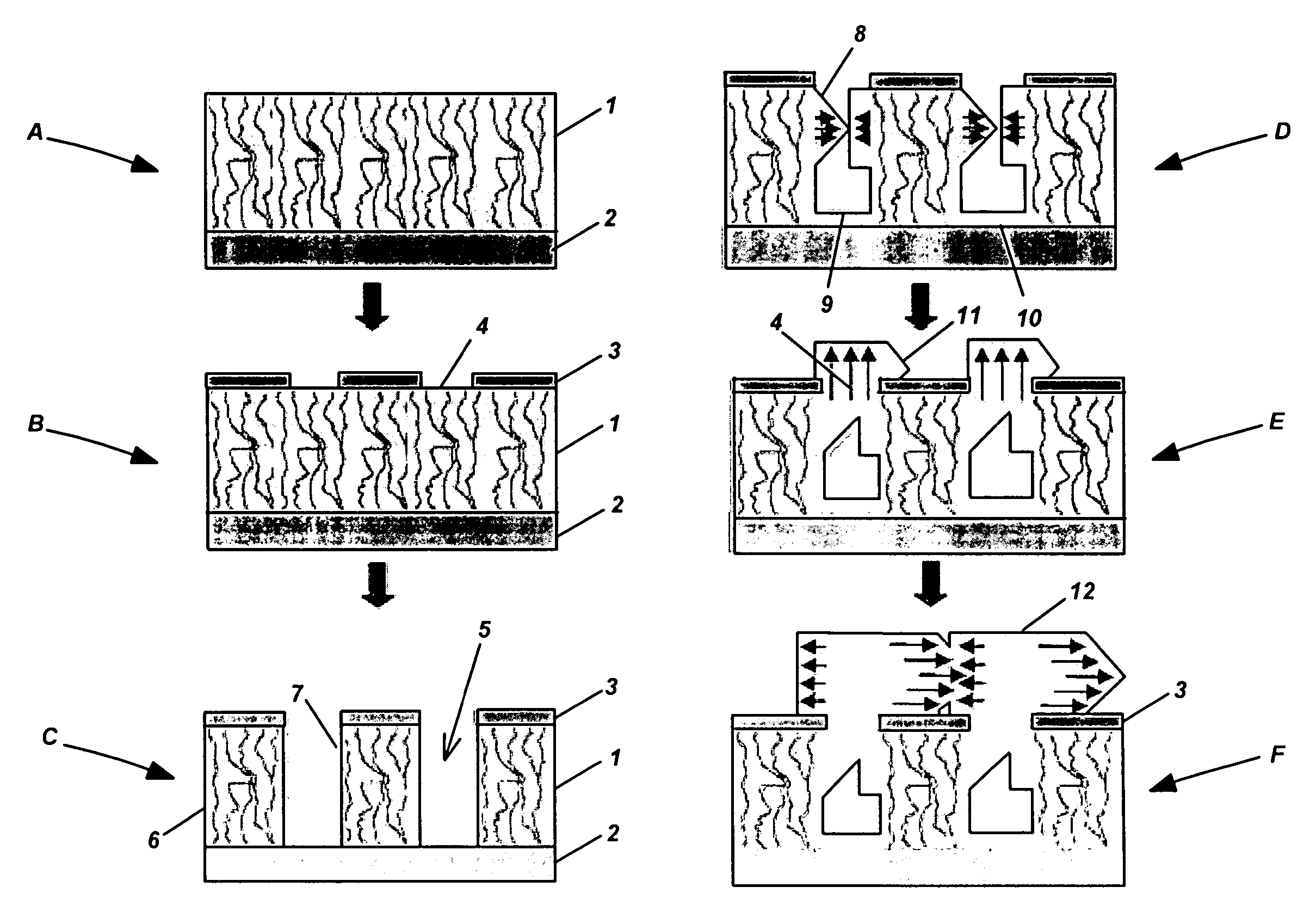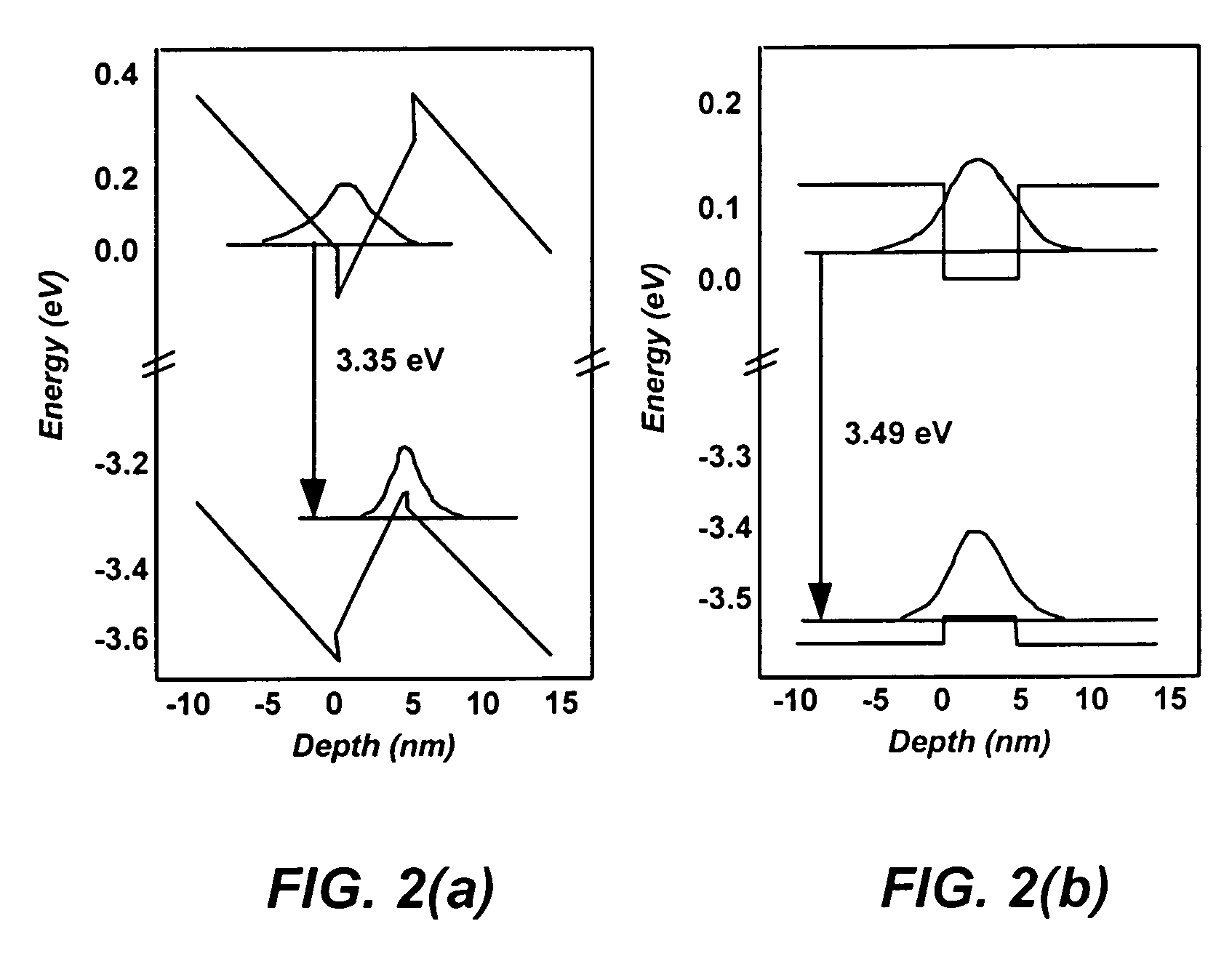Defect reduction of non-polar and semi-polar III-Nitrides with sidewall lateral epitaxial overgrowth (SLEO)
a technology of non-polar and semi-polar iiinitrides and epitaxial overgrowth, which is applied in the direction of basic electric elements, electrical apparatus, and semiconductor devices, can solve the problems of gan materials that perform poorly, devices that perform poorly, and reduce the likelihood, so as to eliminate polarization fields, reduce dislocation density, and prolong life
- Summary
- Abstract
- Description
- Claims
- Application Information
AI Technical Summary
Benefits of technology
Problems solved by technology
Method used
Image
Examples
Embodiment Construction
[0027]In the following description of the preferred embodiment, reference is made to the accompanying drawings that form a part hereof, and in which is shown by way of illustration a specific embodiment in which the invention may be practiced. It is to be understood that other embodiments may be utilized and structural changes may be made without departing from the scope of the present invention.
[0028]Overview
[0029]The growth of (Ga, In, Al, B)N materials in the polar [0001] c-direction causes lower performance in optical devices due to polarization fields causing charge separation along the primary conduction direction. Therefore, research has recently been conducted on non-polar direction growth along the a-[11-20] and m-[1-100] directions of these materials to eliminate such effects and improve device performance significantly.
[0030]Another problem that is common to polar, semi-polar and non-polar III-Nitride materials is high defect densities, the most common of which are disloc...
PUM
 Login to View More
Login to View More Abstract
Description
Claims
Application Information
 Login to View More
Login to View More - R&D
- Intellectual Property
- Life Sciences
- Materials
- Tech Scout
- Unparalleled Data Quality
- Higher Quality Content
- 60% Fewer Hallucinations
Browse by: Latest US Patents, China's latest patents, Technical Efficacy Thesaurus, Application Domain, Technology Topic, Popular Technical Reports.
© 2025 PatSnap. All rights reserved.Legal|Privacy policy|Modern Slavery Act Transparency Statement|Sitemap|About US| Contact US: help@patsnap.com



